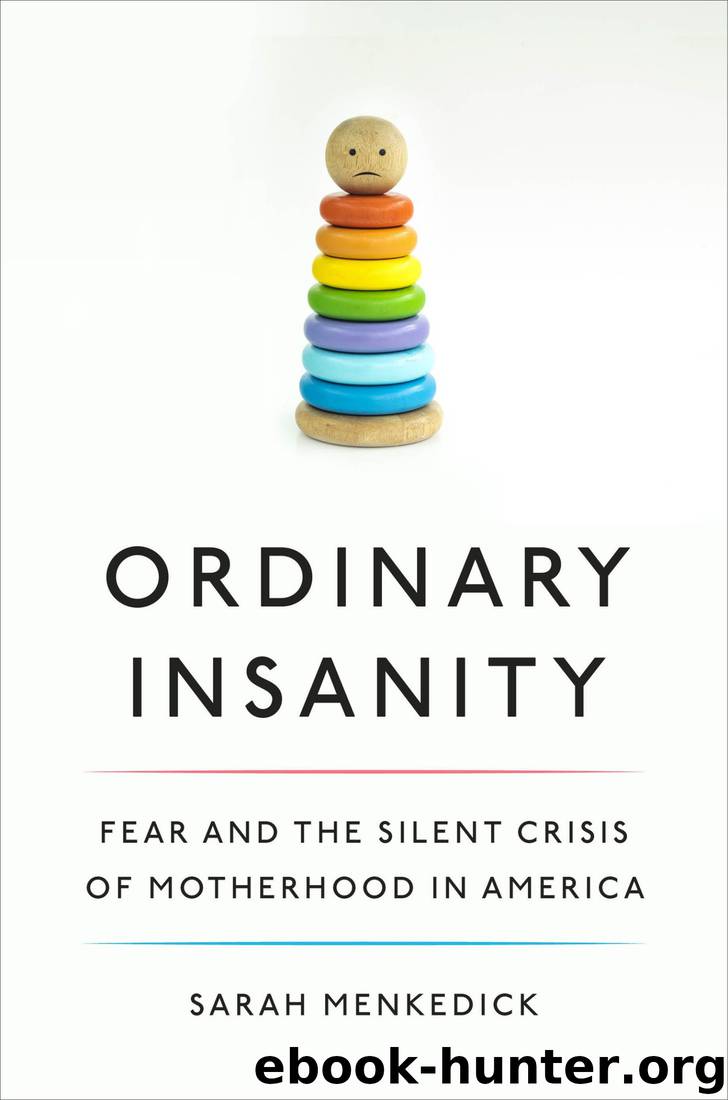Ordinary Insanity by Sarah Menkedick

Author:Sarah Menkedick
Language: eng
Format: epub
Publisher: Knopf Doubleday Publishing Group
Published: 2020-04-06T23:00:00+00:00
8
Institutionalized
The twentieth century was dubbed “the century of the child” by influential Swedish feminist Ellen Key. Birthrates were falling, as was infant mortality, and family sizes began to shrink from ten to seven to three or four. Whereas in the past the child had been an economic asset, a little adult who contributed to the family work and income, by the Victorian era, children—like their mothers—had to be protected from the vagaries of the industrial economy. The child—the white middle-class child, that is, for working-class children and children of color were worked to exhaustion in fields and factories—was portrayed as innocent, precious, and full of potential. Childhood became a discrete period with its own stages and characteristics. At a time of dizzying industrial growth and societal change, children were imbued with the potential of forging a vastly different future. With the right expert training, they could bring forth miraculous scientific and technological progress that hovered just on the cusp of the imaginable. If coaxed and trained and stimulated appropriately, any child could grow up to become the president—or a serial killer.
There was one glaring problem with this new, optimistic fascination with childhood. A child’s potential depended on an actor who made experts very uneasy: the mother. Ehrenreich and English write, “The discovery of the child was, in one sense, a discovery of the power of women.” As the century of the child began its bloom, the male solution to female reproductive power was experts. If the child was to depend on the mother, then the mother was to depend on male experts. The latter offered stern and often contradictory advice on feeding and bathing and sleeping and thumb-sucking, beseeching mothers to act as their laboratory assistants.
Every basic biological need and development of childhood could be and was rationalized: feeding and napping were to take place on tight schedules; height and weight were to be carefully mapped; cognitive and motor skills were to emerge at the appropriate times. In the new industrial era, children could be programmed like machines. One formula ad at the time promised to “build up that tiny body into a strong, sturdy piece of human machinery.” Ann Hulbert, who documented the shifting tides of this advice in Raising America: Experts, Parents, and a Century of Advice About Children, has written that the early-twentieth-century mother was expected to “walk—and speak—ever so softly, and carry a big chart.”
Arnold Gesell’s studies on early childhood development at Yale in the 1920s developed a timeline of “milestones” that is still, as we near the second quarter of the twenty-first century, the signature measurement of a child’s physical, cognitive, social, and emotional development. Based on small studies of white middle-class children, these milestones—which now track minutiae including “reaches for object with one hand using the raking grasp,” “shows interest in a stuffed animal by pretending to feed,” and “can draw a person with at least six body parts”—became major nodes of anxiety for mothers.
Suddenly there was a prototypical “normal” infant who hit
Download
This site does not store any files on its server. We only index and link to content provided by other sites. Please contact the content providers to delete copyright contents if any and email us, we'll remove relevant links or contents immediately.
On the Front Line with the Women Who Fight Back by Stacey Dooley(4311)
The Lonely City by Olivia Laing(4121)
The Rules Do Not Apply by Ariel Levy(3906)
Bluets by Maggie Nelson(3711)
The Confidence Code by Katty Kay(3566)
Three Women by Lisa Taddeo(2920)
Inferior by Angela Saini(2832)
A Woman Makes a Plan by Maye Musk(2831)
Pledged by Alexandra Robbins(2792)
Not a Diet Book by James Smith(2726)
Confessions of a Video Vixen by Karrine Steffans(2675)
Nice Girls Don't Get the Corner Office by Lois P. Frankel(2594)
Wild Words from Wild Women by Stephens Autumn(2589)
Brave by Rose McGowan(2503)
The Girl in the Spider's Web: A Lisbeth Salander novel, continuing Stieg Larsson's Millennium Series by Lagercrantz David(2381)
The Clitoral Truth: The Secret World at Your Fingertips by Rebecca Chalker(2243)
Why I Am Not a Feminist by Jessa Crispin(2240)
Women & Power by Mary Beard(2225)
Women on Top by Nancy Friday(2123)
